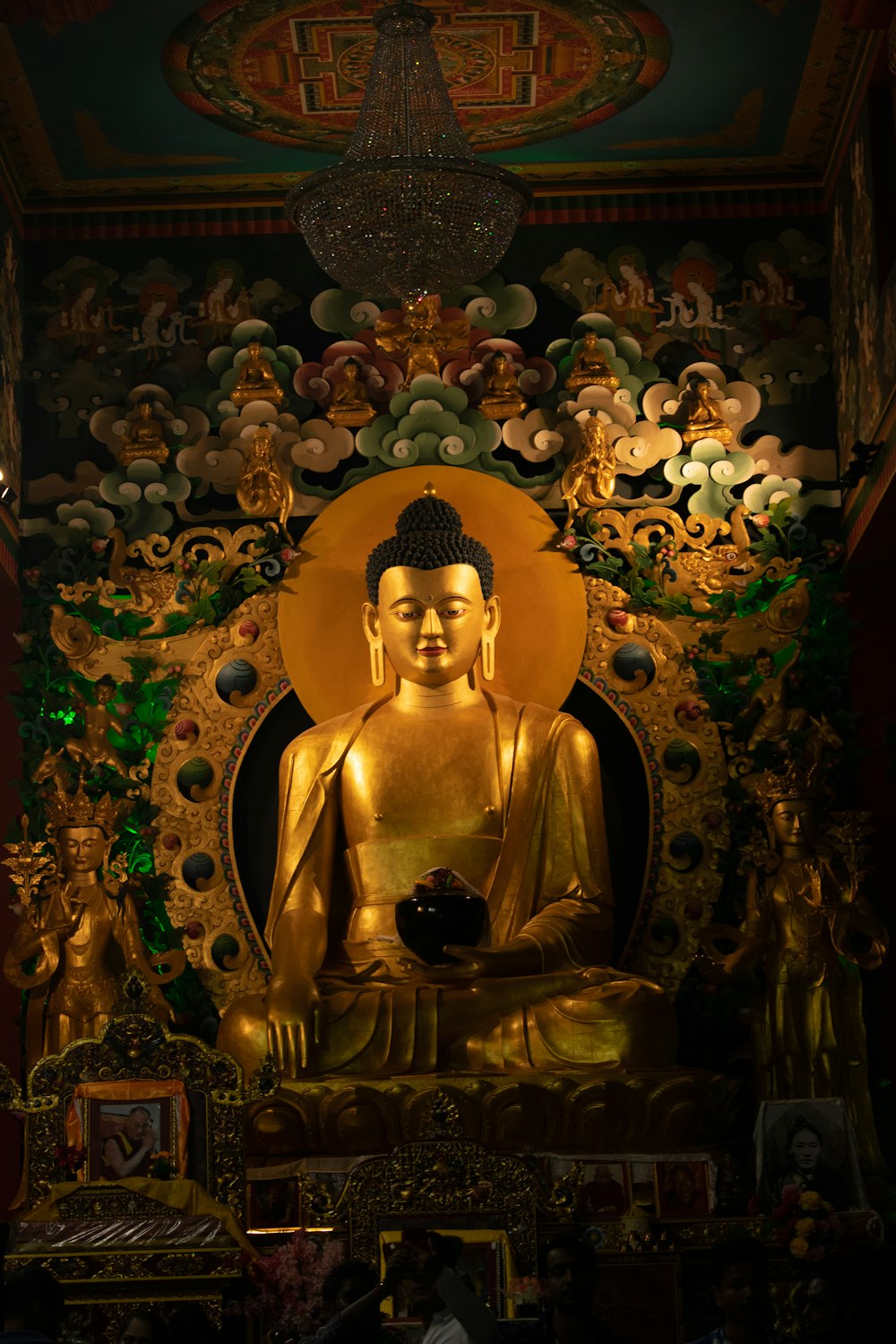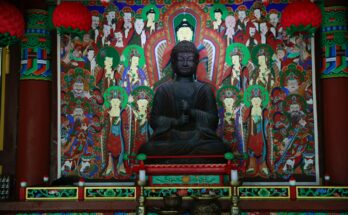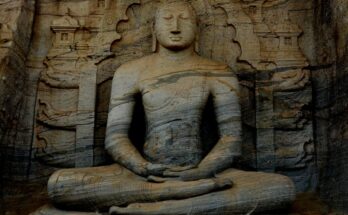Chinese Buddhism: History and Beliefs
around what is now Nepal, Buddhism began as a cultural system of beliefs and practices centered on the ideas of compassion and non-attachment around the sixth century BCE. About 150 CE, as the Han empire was coming to an end, Buddhist monks from India brought it to China. It took more than a century for it to fully integrate into Chinese culture.
Daoism was a major factor in Buddhism’s rise to prominence. Buddhists took notions from Daoism through the Chinese language in order to make Buddhist doctrines easier for the Chinese to understand. This interchange was beneficial to Buddhism as well as Daoism. Daoists developed their theories on the universe and the organization of their monastic orders. Buddhists acquired a vocabulary that facilitated the teaching of their tradition.
In this article we have covered everything about Chinese Buddhism. The discussion here covers the history along with contemporary trends. With an emphasis on various schools of thought, this is a must read.
Buddhism in China
Image Credits: Unsplash.com
Buddhism gradually gained traction in Chinese culture, influencing everyone from commoners to the emperor. In reality, Buddhism was on par with Daoism in terms of political clout and appeal by the sixth century. Major Chinese Buddhist schools came into being during this period and the following three centuries. Two schools of Buddhism that are still relevant today are Chan (Zen) Buddhism and Pure Land Buddhism. These two schools of Chinese Buddhism are practiced even in mainland China, where the government frequently represses religion.
Buddhism in China has had numerous transformations over its history, much like Confucianism and Daoism, and has a wide range of intellectual and social expressions. The majority of researchers consider Buddhism to be multifaceted. For example, the political influence, geography, and philosophy of the Huayen and Tiantai schools differed. Korea and Japan adopted and were inspired by the teachings of many schools.
Bodhisattva Guanyin: Chinese Buddhism
Among the most well-known characters in Chinese Buddhism is the Bodhisattva Guanyin, also known as Guanshiyin, or the one who hears the world’s sorrows. Originally from Indian Buddhism, Guanyin is a major character in the devotional activities of both Chinese Buddhists and Daoists. She is portrayed as a superior being who alleviates the suffering of the world.
Chinese Buddhism recognized by Government
Image Credits: Unsplash.com
Along with Protestantism, Catholicism, Islam, and Taoism, the Chinese government officially recognizes five different religions, including Buddhism. Every religion was outlawed during the Cultural Revolution (1966–1976), including all forms of Buddhism. The “Sinicization” strategy, which is currently being enforced by the Chinese government, calls for foreign religions to assimilate into Chinese customs and culture. The government honors Han Buddhism for incorporating Taoist, Confucian, and other traditional Chinese practices and beliefs.
But many Buddhists are also under government scrutiny, particularly those who practice Tibetan Buddhism. The Chinese government has been under fire in recent years for demolishing temples and statues representing Tibetan Buddhism.
Han Buddhism
Han Buddhism, a subset of Mahayana Buddhism that has long been infused with various Chinese belief systems, is practiced by the great majority of Chinese Buddhists. Numerous rulers encouraged Han Buddhism, particularly in the Tang dynasty (618–907), which aided in its national dissemination. At the moment, Han Buddhists own more than eight out of 10 recognized Buddhist temples in China.
In isolated areas of southwest China, ethnic minorities are the main practitioners of Theravada and Tibetan Buddhism. They have adopted customs and beliefs specific to certain areas and ethnic groups, much like Han Buddhism.
Mixing of beliefs: Chinese Buddhism
Image Credits: Unsplash.com
Many Chinese people who claim to believe in Buddhist deities might actually be following their folk religion. Belief blending is frequent in China, particularly within traditional religions. For instance, the Chinese people worship Guanyin, also known as Avalokiteśvara in Sanskrit, as a bodhisattva and as a goddess of folk religion who answers prayers for things like money, health, and having a son.
Buddhists in China
Because Buddhism and other traditional Chinese religions have hazy boundaries, estimating the amount of the Buddhist community in China is difficult, just like it is with Taoism and folk religion. Buddhism does not necessitate exclusivity of practice or belief, in contrast to Islam and Christianity. To identify as Buddhists, one does not have to be a member of a nearby temple or Buddhist organization or take part in the official practice of “taking refuge”.
Because of this, survey items that gauge one’s self-identification as a Buddhist (such as “What is your religious belief?”) The questions “Which religion do you believe in?” and “To which religion do you belong?” do not adequately account for persons who practice or hold Buddhist ideas but do not see themselves as officially associated with Buddhism. When survey questions focus on Buddhist affiliation, the results are typically substantially lower than when they inquire about beliefs about Buddha and/or bodhisattvas, or about burning incense to honor Buddha and other deities.
Confucianism and Taoism
As Buddhism gained popularity, its beliefs blended with those of Taoism and Confucianism to form the foundation of ancient Chinese governance and society. Chinese literature, art, and architecture are examples of its influence.
Confucianism, Taoism, and Buddhism all contributed values and concepts that are still widely accepted in Chinese culture today. The ancient Chinese culture valued all three of these philosophies highly and applied their various teachings to various aspects of daily life, despite the variations and often incongruous aspects among them.
How is Chinese Buddhism different?

Image Credits: Pexels.com
The idea that Buddha is not only a teacher who instructs followers on what to do, but also a god who should be prayed to for assistance and salvation, is one of the main distinctions between Chinese Buddhism and the original Buddhist teachings.
Praying to both Buddha and Taoist gods, Chinese Buddhists combine their beliefs in Taoism and Buddhism.







